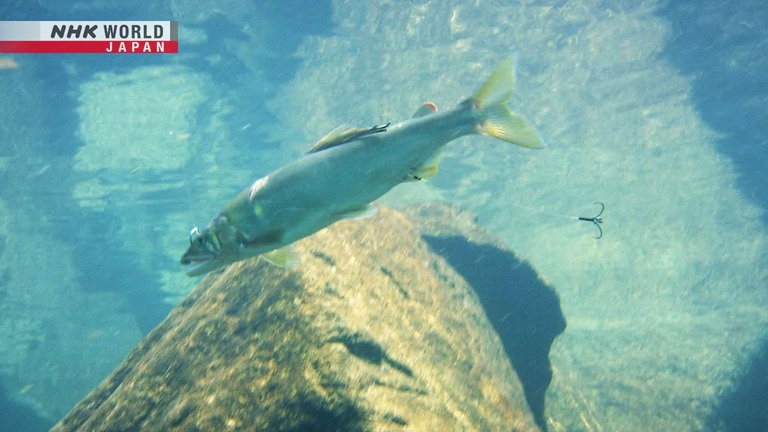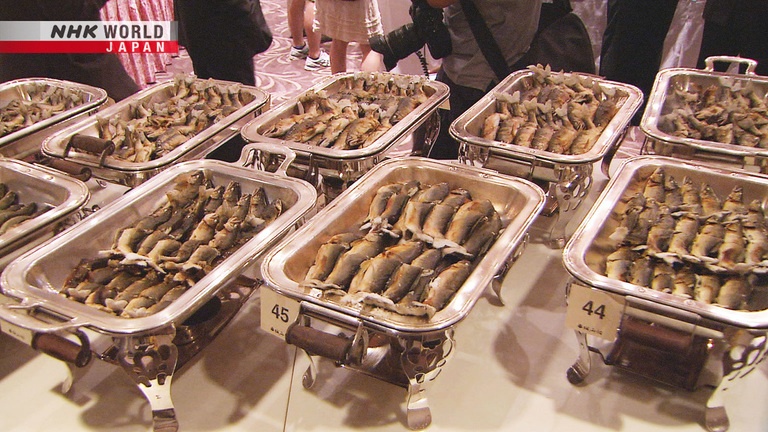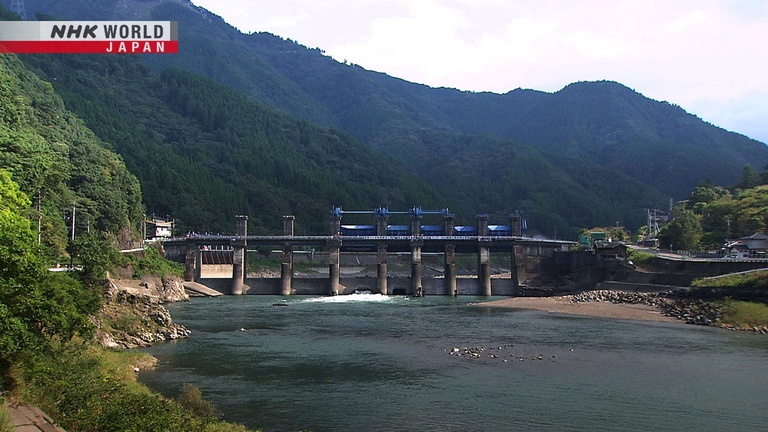Ayu: Treasures of the River
When summer arrives, there is a fish that causes the hearts of fishermen to race with anticipation. It is the "ayu," or "sweetfish" - little known outside Asia, but a key part of summer in Japan. Its scent has led people to call it "the fragrant fish," and the soft flavor of its meat holds a delicate sweetness. Japanese people have been captivated by ayu. In the spring, the fish swims upstream from the ocean, and in the summer it stays near rocks, eating algae and growing larger. In the fall, it goes downstream to lay eggs, and its short life then comes to a close. Its birth and death both happen in the space of just four seasons. Ayu is in the hearts of the Japanese together with river memories. We travel Japan to learn more about it.
Live Decoy Fishing

The most popular ayu fishing method - one that has captivated countless people - is the live decoy method. When the ayu eat algae off of rocks as they swim upstream and grow larger, they create territory around the rocks. The live decoy method cleverly exploits this trait. The fishermen place a hook on a decoy ayu and let it swim in the other fish's territory. The territorial fish then tries to physically force out the intruder, and that is where the fisherman must use a keen sense of how to hook the new ayu. Making the fish fly out of the river and catching it is another well-loved part of the experience.
The River Decides the Flavor of the Fish

Once a year, top ayu from 50 rivers across Japan are brought together and their flavor is compared at a contest. Depending on the environment and water quality of the rivers they are raised in, it's said that subtle differences arise in the flavors of the ayu. There is a yellow color to the fins that only appears in ayu well-fed off of good algae. The contest participants love their rivers and their ayu, and by comparing the flavor of their fish and seeking out the best one, they deepen their love for their rivers even further.
A Dam Demolished for Ayu

Kyushu's Kuma River is known for the large ayu fished there. However, it was there that people worked tirelessly to keep the ayu alive. Because young ayu could not swim past the dam, people caught the fish and carried them upstream. Later, in front of the dam, they would catch the fish going downstream to lay eggs, artificially fertilize them, and let them free downstream. Due to demand from the people, it was decided that the dam would be demolished, and 6 years of work began. The pent-up reservoir quickly recovered its flow, and new ayu now flourish there.